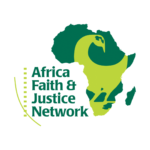Opportunities
This is the time for Burundi to build its development foundation. The Burundian government plans to review its constitution (as it is required by law to be done every five years) to encourage investors who are interested in business in Burundi. The Code of Investment is one of the laws that needs revision because it has been a hindrance to developing Burundi’s tourism sector.
Through its community service program, Burundians have built 200 primary schools in addition to 300 built by the government. Burundi provides free primary school education and free healthcare for all pregnant woman and every child under the age of 5.
On the issue of peace and conflict, a ceasefire negotiation with the FNL rebel group is in progress and there is hope that the deal will be sealed soon. Burundi is grateful for the help it received during its civil war and today it is giving back by contributing peacekeeping troops in Sudan, Somalia and Ivory Coast. In addition, unlike any other government to date, Nkurunziza plans to examine Burundian history by putting in place the Truth and Reconciliation Commission (TRC) to deal with all crimes committed since 1962. This not only aims to build a stable and peaceful Burundi, but also to bring an end to years of hurt and anger that many Burundians live with daily. One of the challenges that has delayed the trial of some of the criminals, says president Nkurunziza, has been the temporary immunity stipulated in the Arusha accord.
Land and Property
The issue of land rights is a serious one in Burundi. Consequently, the government recently put in place the “land and other property commission.” With an area of 27,830 sq. km, Burundi is a very small country for its estimated 7,548,000 people. Land is a particularly difficult issue for Burundians who were born in refugee camps after 1962, for orphans, and for those whose land was sold because they belonged to rebel groups. Fortunately, on the matter of land inheritance and women, the Burundian government has put in place a law to allow them to inherit land – a huge opportunity for the country to change its mentality on women’s rights.
Challenges
Despite such successes, Burundi still faces many challenges. In 2007, the World Bank estimated Burundi to be the poorest country in the world. Disease, high birth rates, HIV/AIDS, and disarmament of civilians who were involved in the civil war are all issues that remain to be addressed. Also, in light of the situation in Kenya, Burundi should be on the radar of the international community because of its history of ethicized politics. Among the three Burundian tribes, Hutu, Tutsi and Twa, there has always been tension between the Hutu and the Tutsi. Before the election of President Melchior Ndadaye, a Hutu, Burundi had been led by Tutsi presidents since its independence from Belgium in 1962. In 1972, rivalry between the two tribes resulted in the killing of about 100,000 Hutu intellectuals and moderate Tutsi. After the assassination of President Ndadaye by Tutsi military extremists in 1993, Hutu and Tutsi alike died in large numbers. The United Nations called this genocide against the Tutsi minority. Thus, while Burundi has made great strides under President Nkurunziza, it must be wary of the difficulties faced by new democracies in Africa.
By Bahati Ntama Jacques
